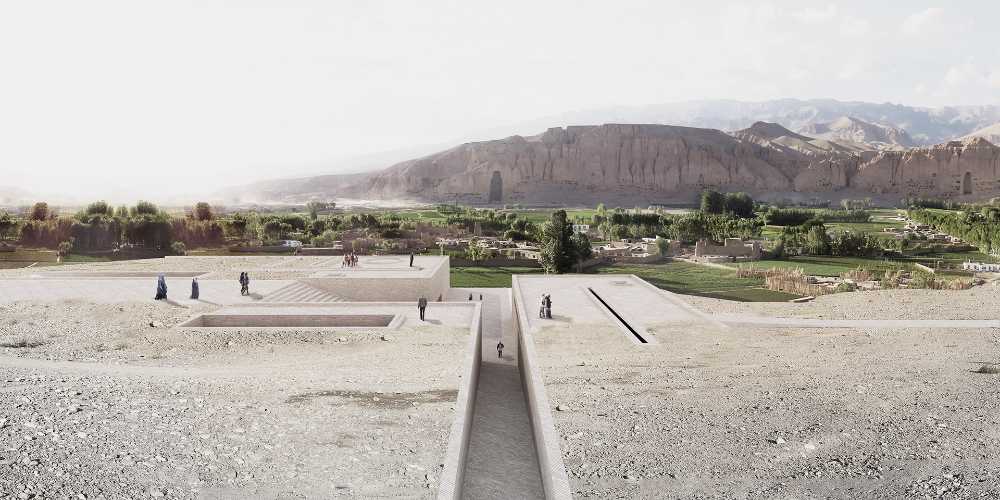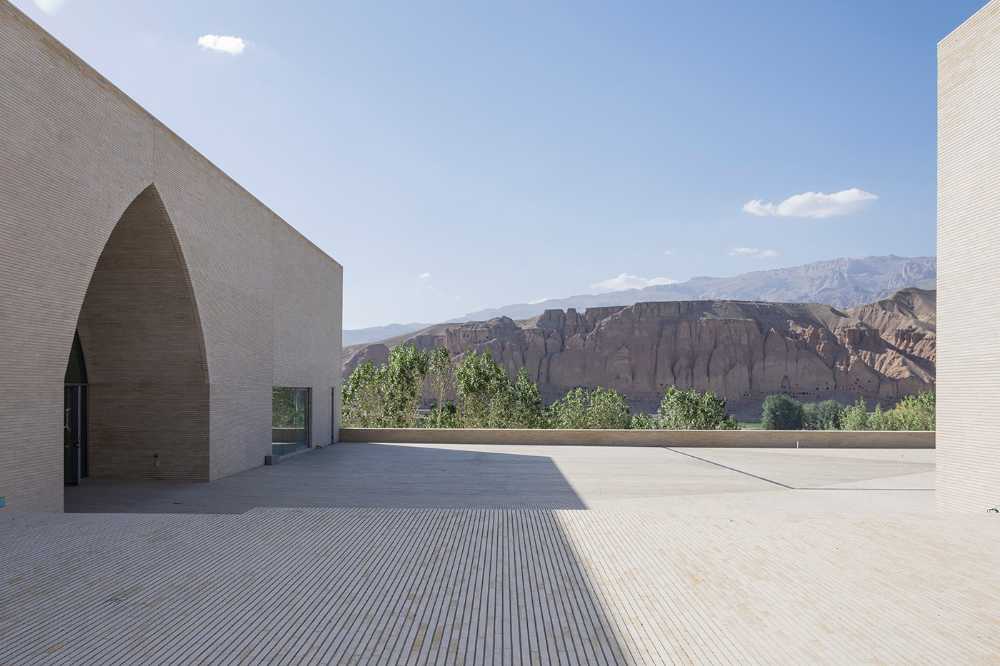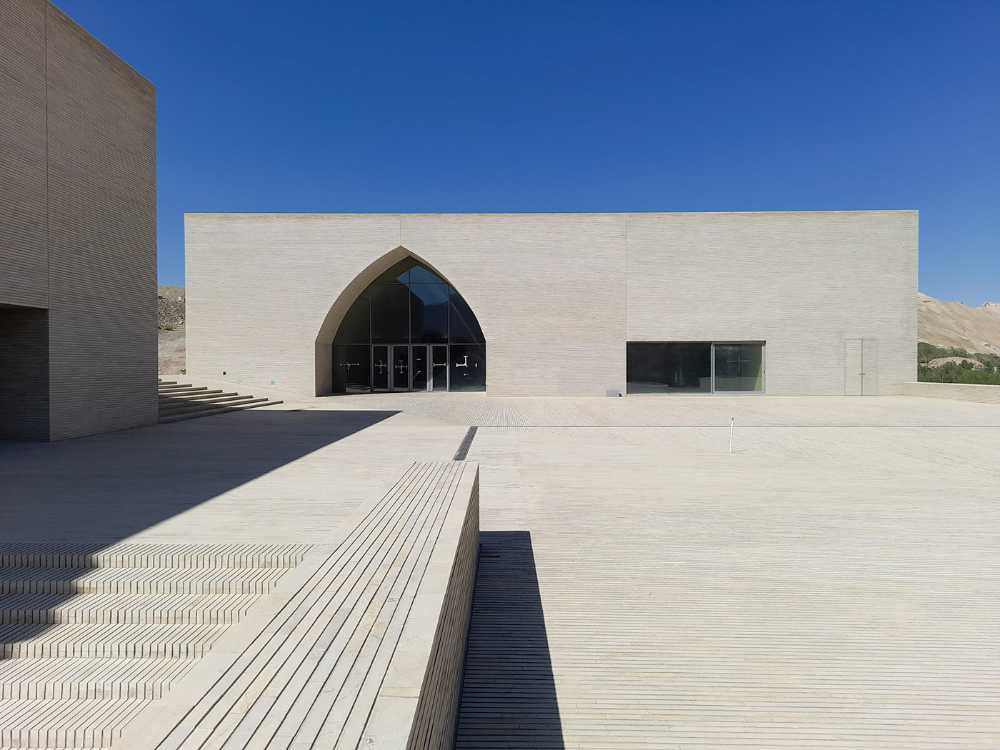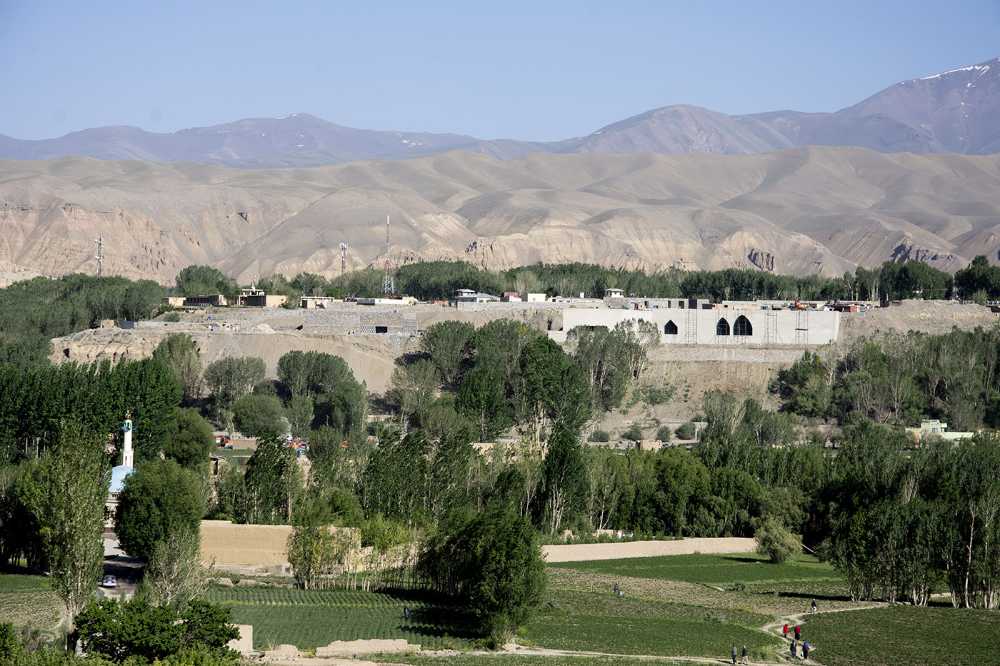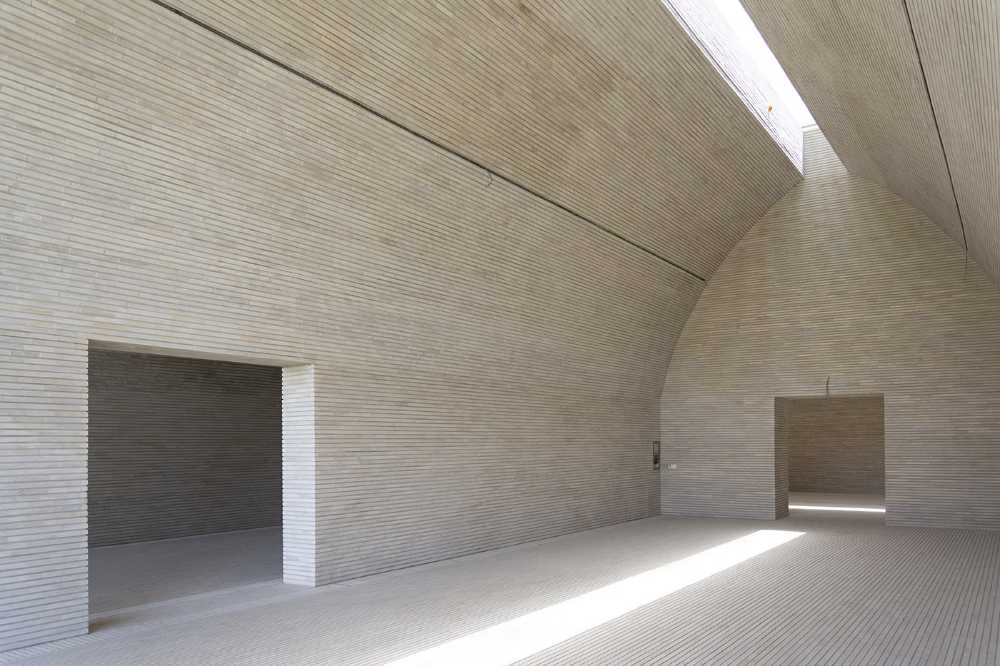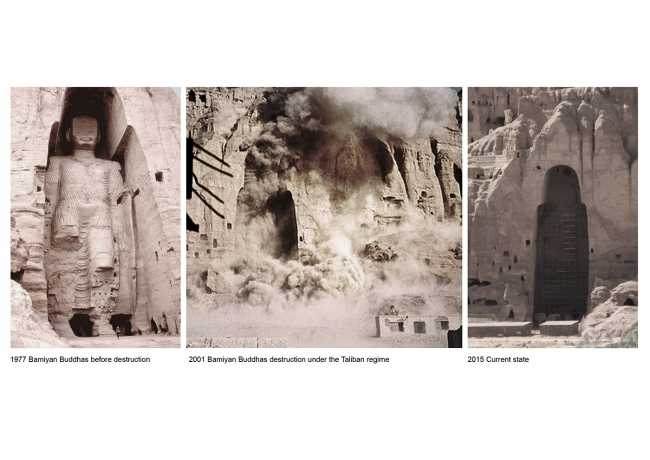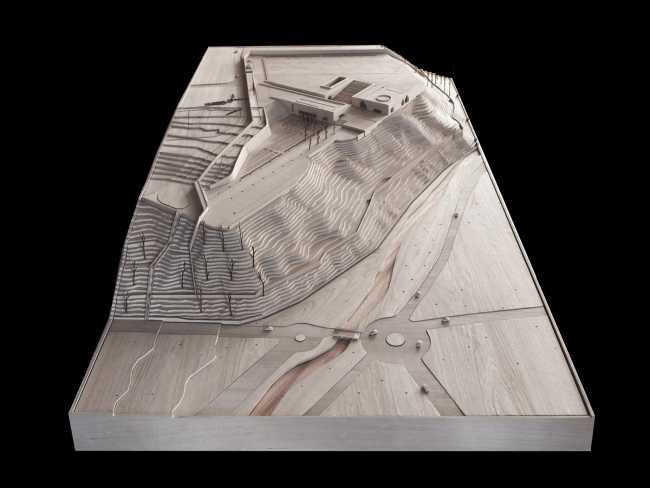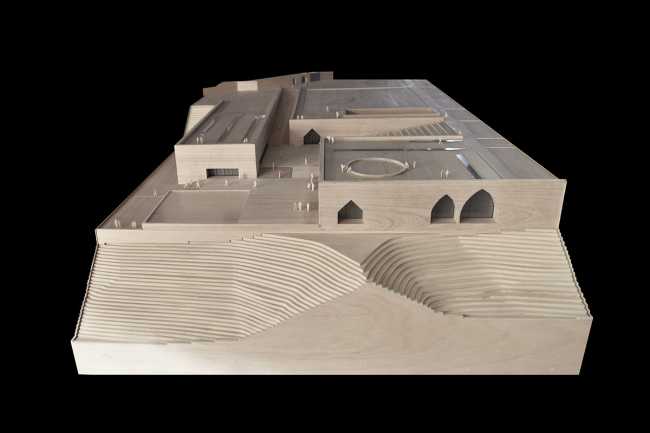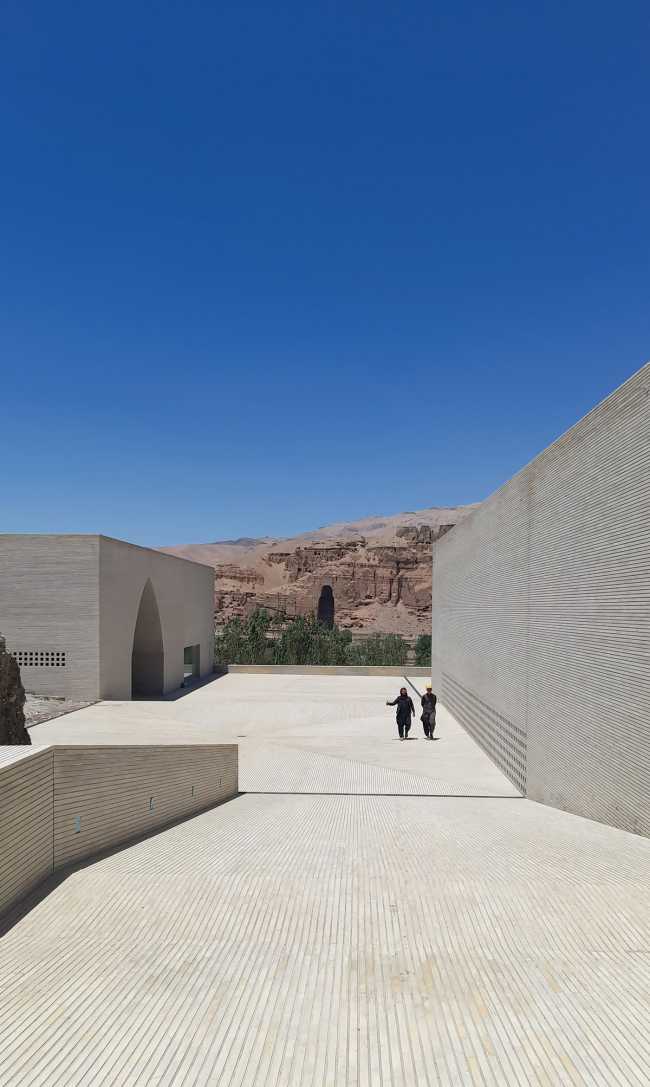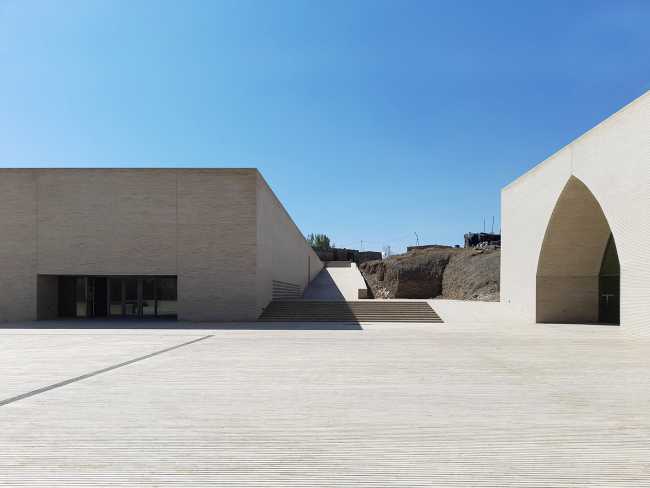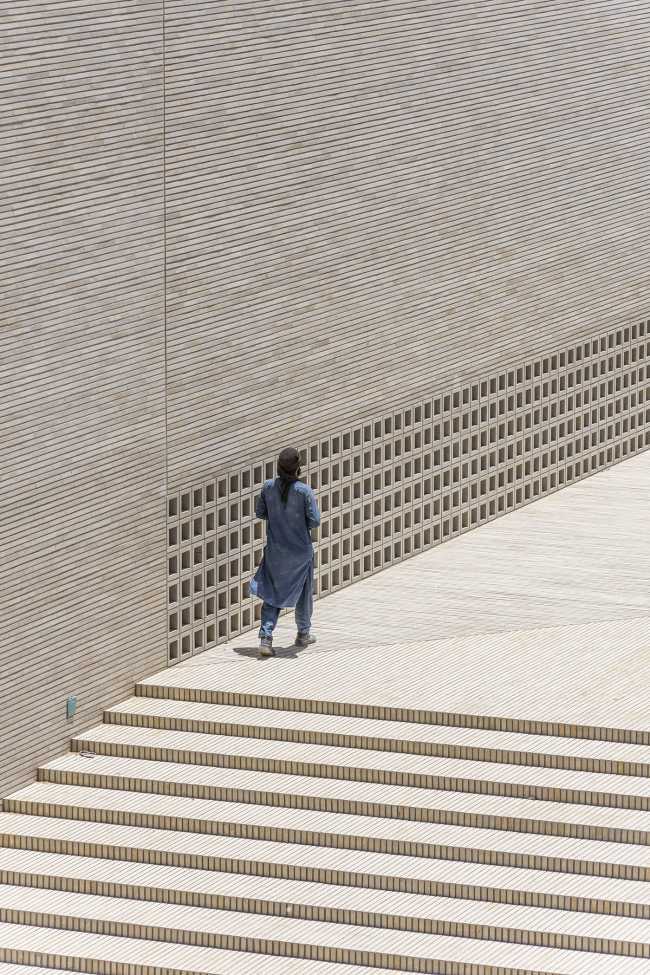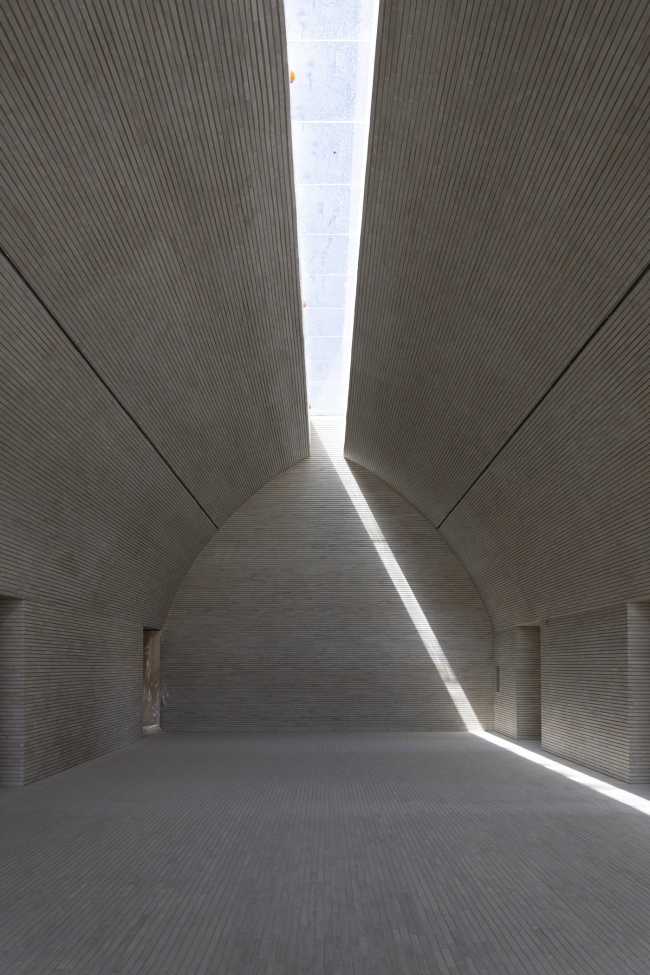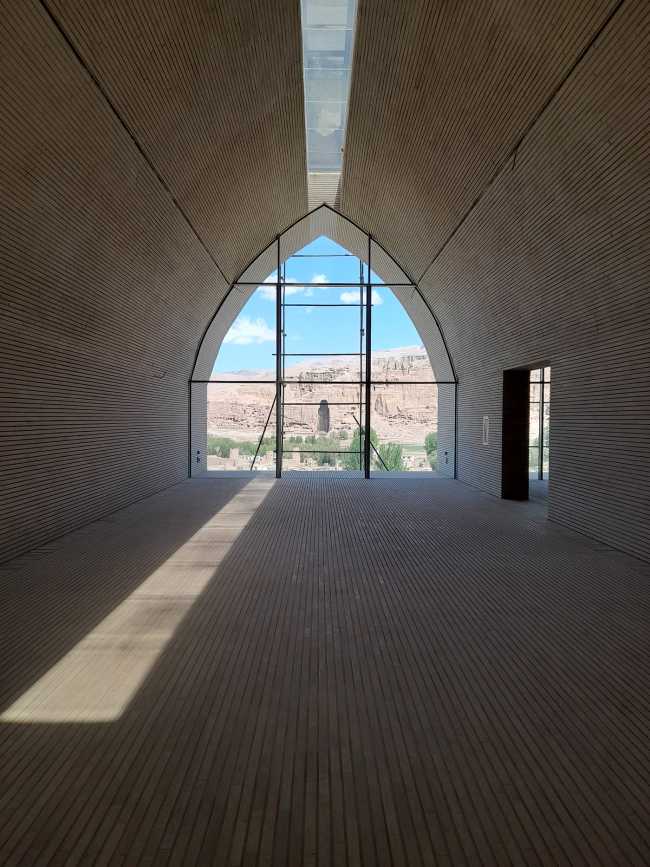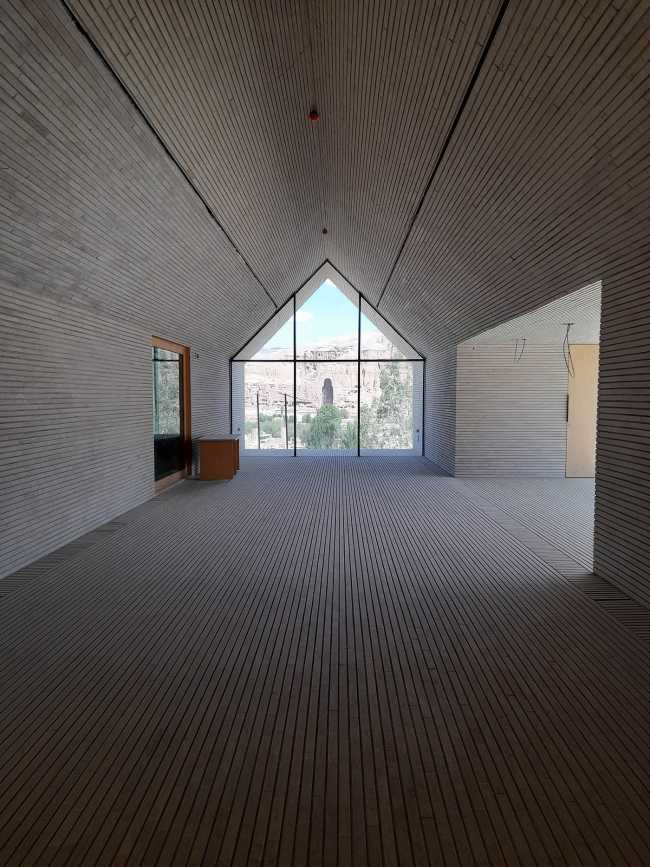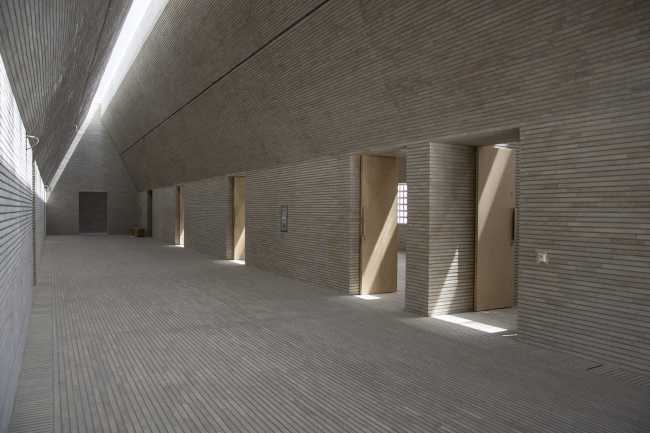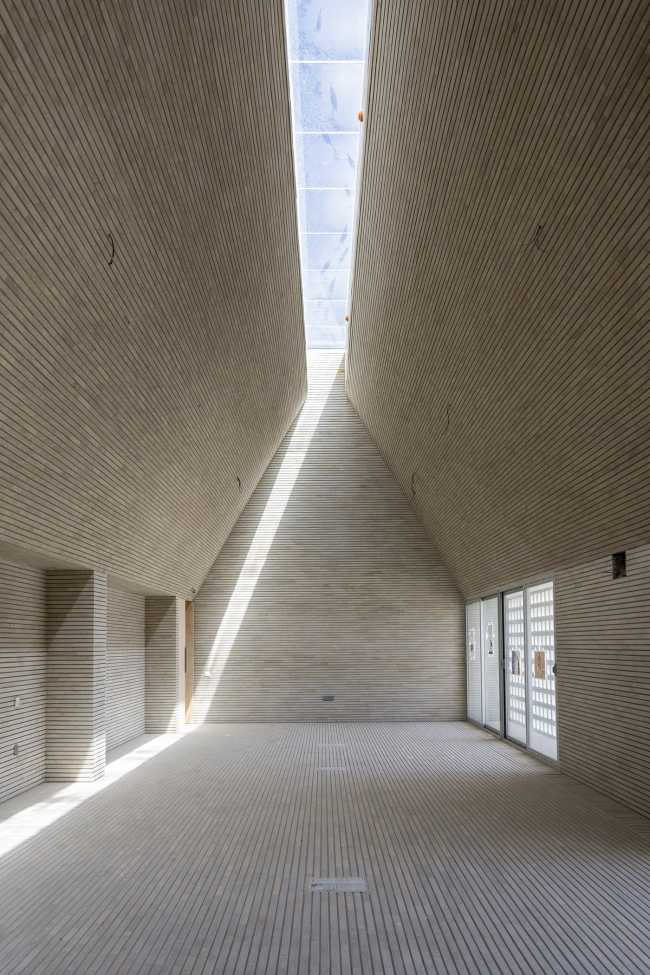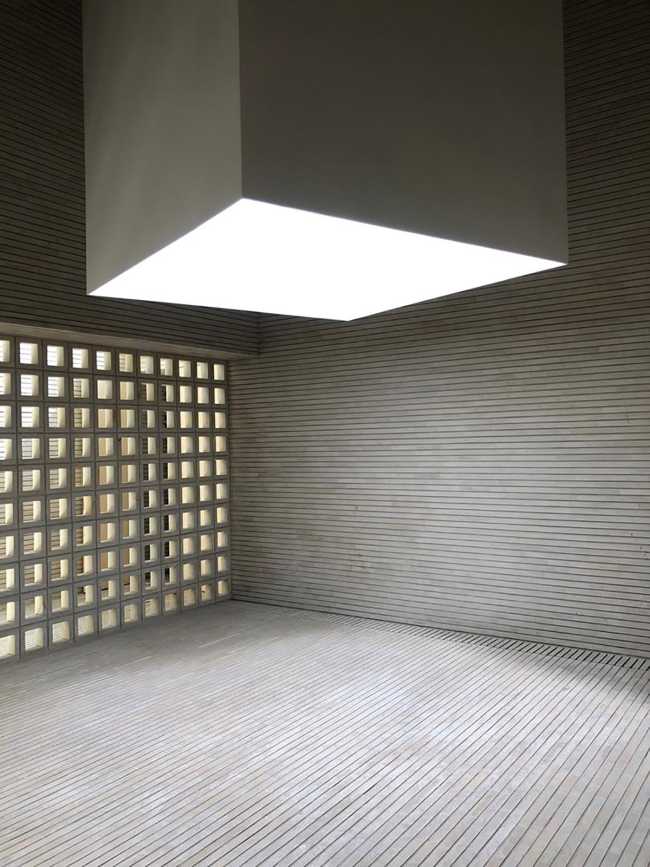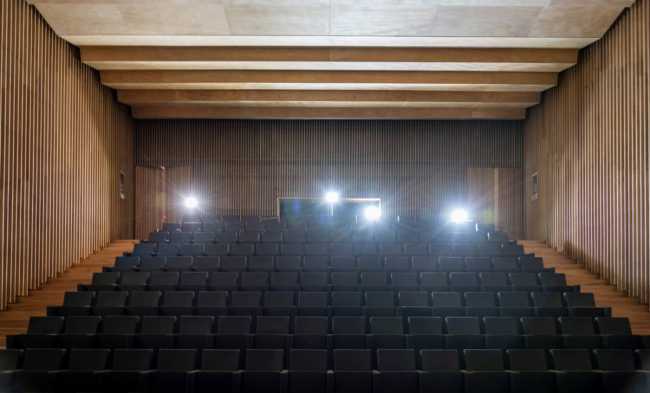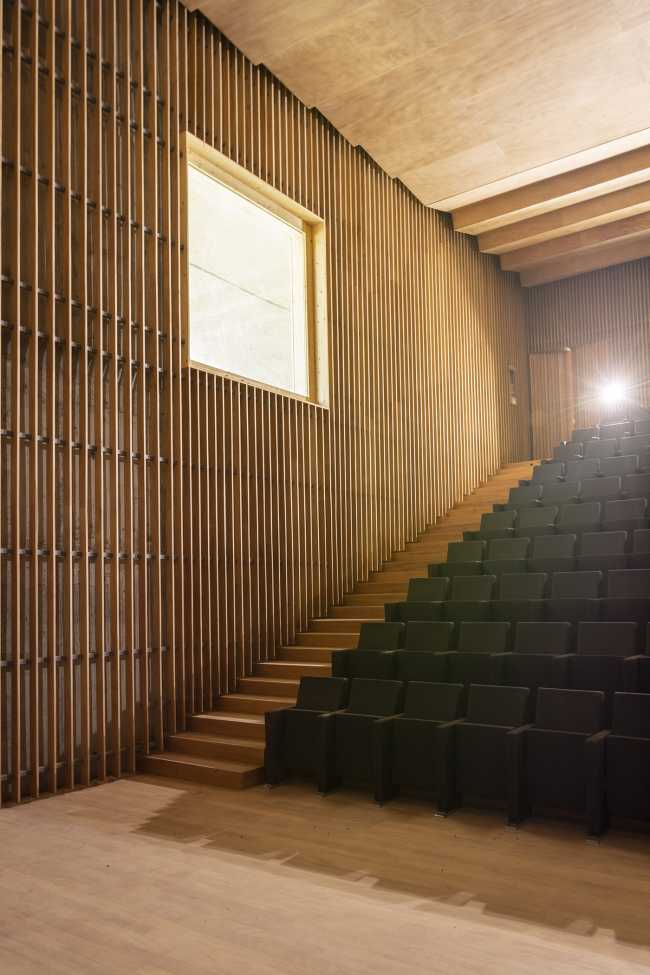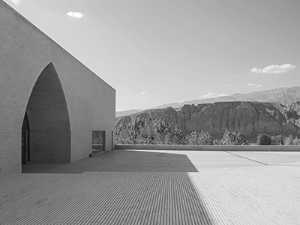An architectural project with minimal visual impact on the territory
The project for the Bamyan Cultural Center by M2R Arquitectos wins the competition, proposing a new vital center for communicating and sharing ideas: not a building-object, but rather a meeting place; a system of spaces where the imposing landscape of the Buddha cliffs intertwines with the cultural activities that the Center will promote.
The building, completed in 2021, was not 'constructed' but rather 'discovered' by carving it out of the ground. This proposed solution, unlike other architectural projects presented, aims to create a building with minimal impact that fully integrates into the landscape, utilizing the thermal inertia and insulation of the ground while also representing a true homage to local building traditions.

